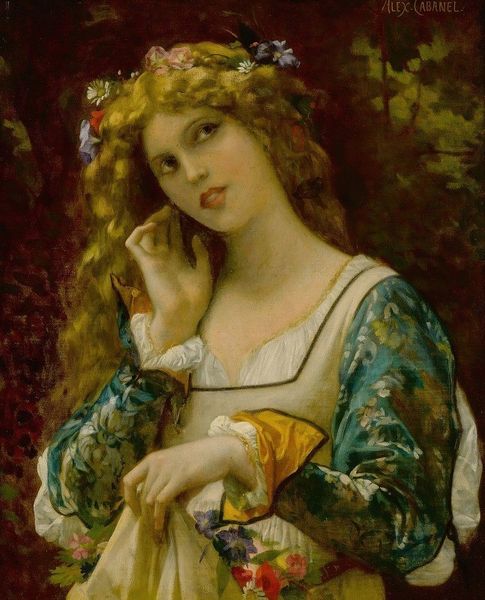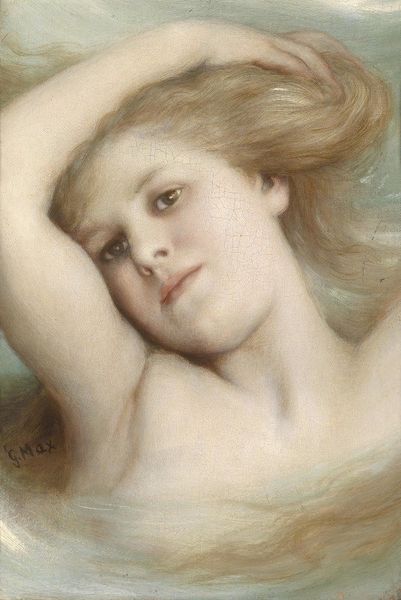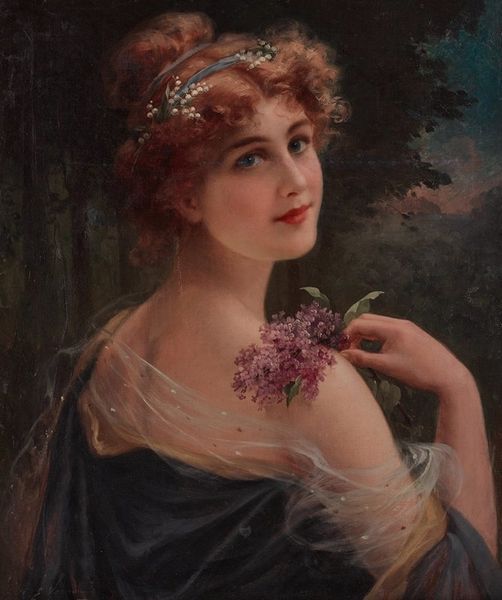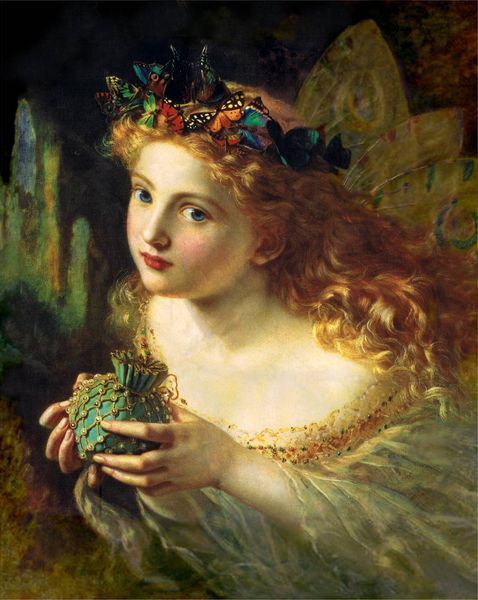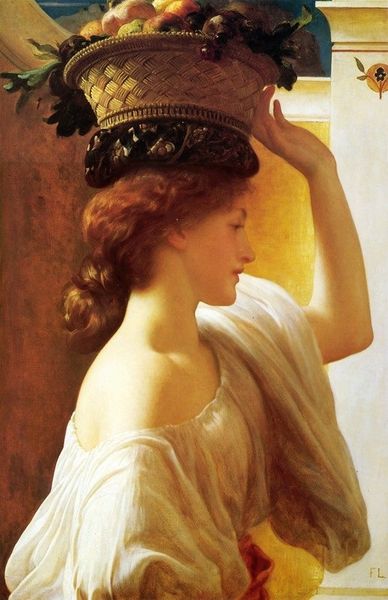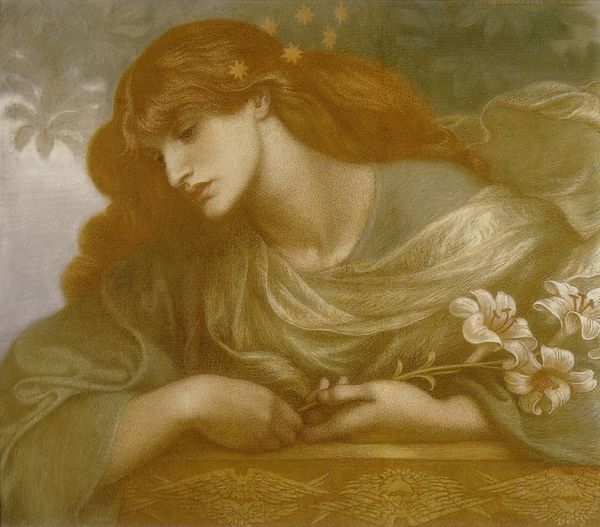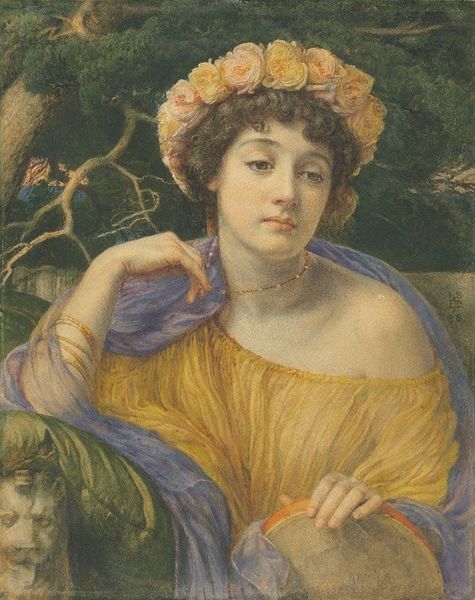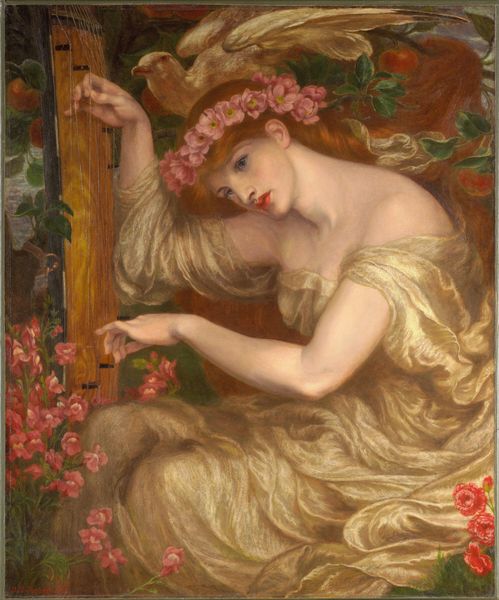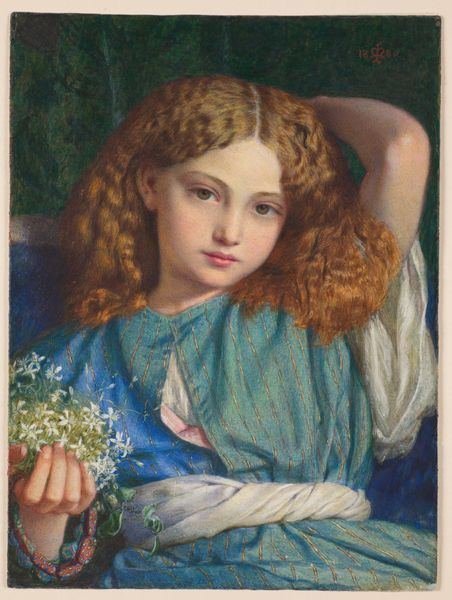
painting, oil-paint
#
portrait
#
figurative
#
fantasy art
#
painting
#
oil-paint
#
figuration
#
romanticism
#
symbolism
#
genre-painting
#
academic-art
Copyright: Public Domain: Artvee
Editor: Emile Vernon's painting, "The Dragonfly," is an exquisite oil-on-canvas artwork that I find so delicate. The woman’s soft expression paired with the dragonfly gives the artwork a dreamy feel. What strikes you about it? Curator: I see here an intersection of Romanticism's idealism and the emerging consumer culture. How does Vernon, through the labor involved in creating this illusion, participate in and potentially critique the art market of his time? Consider the oil paint itself – its origins, the process of its refinement. Editor: I see your point about the materiality; it wasn't something I considered at first glance. Is there anything in the process that makes the artist somewhat complicit to the elitism of the art world? Curator: Exactly! How does the very act of painting this, the time, skill, and the market for such idyllic images, reinforce a social hierarchy? The pigments, the canvas, where do these come from, and who had access to them? Who is the target audience? And in turn, what narratives are normalized by creating and celebrating this kind of image of woman? Editor: I never thought about Romanticism this way, always focusing on the subject matter. Viewing art through this materialistic lens gives so much to think about, particularly its effect on shaping perception in an emerging modern society. Thank you for offering a completely fresh outlook on it! Curator: The pleasure's all mine! Hopefully, this gives all of us food for thought, that is, how we can be more cognizant of the materiality of artworks, not just what's depicted on the canvas, but all that it represents.
Comments
No comments
Be the first to comment and join the conversation on the ultimate creative platform.
